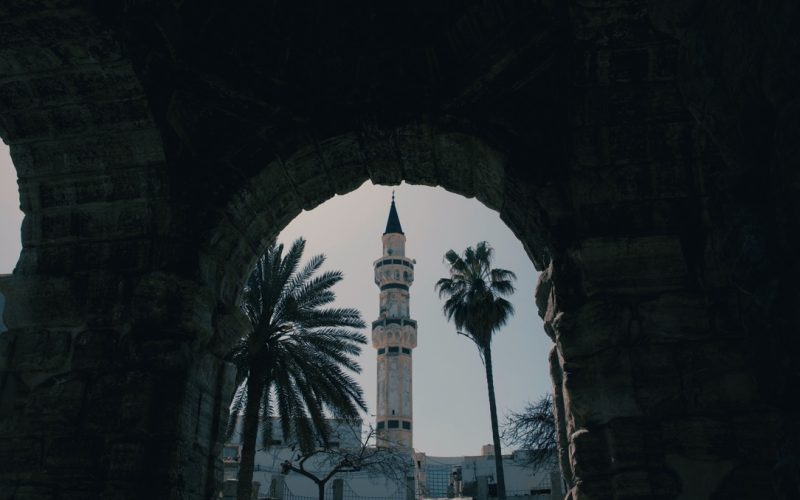Table of Contents Show
I. The Seeds of Change: The Context of Dissent
The Arab Spring, a series of protests and uprisings that swept across the Arab world beginning in late 2010, was fueled by a complex mix of factors that had been simmering beneath the surface for decades. The context was one of widespread discontent with authoritarian regimes, deep-seated corruption, and pervasive economic inequality. In many Arab nations, citizens had grown weary of oppressive governments that stifled political dissent, restricted freedoms, and provided little in the way of economic opportunity.
Tunisia, often regarded as the birthplace of the Arab Spring, became the first flashpoint for change. The self-immolation of Mohamed Bouazizi, a street vendor who faced harassment from authorities, sparked mass protests against the corrupt regime of President Zine El Abidine Ben Ali. Bouazizi’s tragic act resonated deeply with a population fed up with police brutality and lack of opportunity. The protests quickly escalated, culminating in Ben Ali fleeing to exile in January 2011. What began as a local outcry transformed into a powerful movement that echoed throughout the region, igniting a wave of hope among millions who yearned for a better future.
The timing of the Arab Spring was significant. The world was grappling with economic instability in the wake of the 2008 financial crisis, and many Arab nations were no exception. Unemployment rates soared, particularly among youth, while rising food prices added to the burden of struggling families. The pervasive sense of hopelessness and frustration at the status quo created a fertile ground for revolutionary fervor. Social media platforms like Facebook and Twitter played an instrumental role in organizing protests, allowing individuals to share their grievances and mobilize support. What was once a whisper of dissent turned into a roar of demand for change, and the Arab Spring became a symbol of the power of the people.
Yet, even as the Arab Spring took root, there was a palpable tension between optimism and uncertainty. The uprising was not merely a quest for political reform; it represented a deeper struggle for dignity, identity, and the right to self-determination. The Arab world was on the brink of transformation, but the path ahead was fraught with peril. As protests spread to Egypt, Libya, Syria, and beyond, the world watched with bated breath, hoping for a new dawn of democracy in a region long shackled by tyranny.
II. The Ripple Effect: Protests Across the Region
The fall of Ben Ali in Tunisia inspired a wave of protests across the Arab world, with millions of people taking to the streets to demand change. In Egypt, the iconic Tahrir Square became the focal point for a movement that sought to oust President Hosni Mubarak, who had ruled for nearly 30 years. Fueled by similar grievances—economic hardship, political repression, and rampant corruption—Egyptians united in their call for freedom and justice. The protests grew in intensity, culminating in Mubarak’s resignation in February 2011.
However, the euphoria of victory was short-lived. The rapid transition from autocracy to democracy proved to be a daunting challenge. The initial momentum of the uprisings began to fracture as diverse political factions jockeyed for power. The Muslim Brotherhood, a prominent Islamist group, emerged as a key player in the political landscape, winning a majority in the 2012 elections. While many celebrated this as a democratic triumph, others feared the rise of political Islam and the erosion of secular values.
In Libya, the situation took a different turn. The protests against Muammar Gaddafi escalated into a brutal civil war, drawing in international intervention led by NATO. The struggle to overthrow Gaddafi was marked by chaos and violence, ultimately resulting in his death in October 2011. However, the power vacuum that followed led to a protracted struggle for control, with rival factions vying for dominance. Libya descended into a state of lawlessness, and the dream of a stable democracy slipped further away.
Syria presented perhaps the most devastating scenario. What began as peaceful protests against President Bashar al-Assad’s regime quickly devolved into a bloody civil war. The government’s brutal crackdown on dissent fueled a cycle of violence, resulting in a humanitarian crisis of unimaginable proportions. As the conflict escalated, extremist groups like ISIS exploited the chaos, further complicating the situation. The international community grappled with how to respond, with geopolitical interests and alliances shaping the course of events. What was once seen as a hopeful revolution turned into a nightmare, leaving millions displaced and a country in ruins.
III. The Aftermath: Disillusionment and Division
As the initial wave of the Arab Spring receded, the region found itself grappling with a profound sense of disillusionment. The high hopes for democratic reform and social justice began to clash with the harsh realities of political instability and violence. In many countries, the uprisings failed to deliver on their promises, leading to frustration and cynicism among the populace.
In Egypt, the military staged a coup in 2013, ousting the democratically elected President Mohamed Morsi, a member of the Muslim Brotherhood. The military, under General Abdel Fattah el-Sisi, reinstated authoritarian rule, and a crackdown on dissent ensued. Thousands of political prisoners were arrested, and civil society faced severe repression. The dream of democracy in Egypt was replaced by a return to the very oppression that sparked the revolution in the first place. Many Egyptians, who had once taken to the streets with hope and determination, felt betrayed as their aspirations were dashed.
Similarly, in Libya and Syria, the aftermath of the uprisings sowed the seeds of division and conflict. In Libya, the absence of a unifying political authority led to fragmentation, with rival factions and militias battling for power. The country remains embroiled in chaos, with no end in sight. In Syria, the civil war escalated into a complex geopolitical quagmire, drawing in regional and global powers with competing interests. The devastation inflicted upon the Syrian people has left deep scars, and the path to recovery and reconciliation remains elusive.
The disillusionment that followed the Arab Spring extended beyond the immediate aftermath of the uprisings. Many in the region began to question the viability of democracy itself. The stark reality of authoritarianism, sectarianism, and extremism led to a reevaluation of priorities. Citizens who once demanded political change turned inward, seeking stability over chaos, even if it meant accepting repressive regimes. This shift in sentiment posed a significant challenge for those advocating for democracy and human rights, as the Arab Spring’s initial wave of hope faded into a struggle for survival.
IV. The Legacy: Lessons Learned and Hope for the Future
The Arab Spring was not merely a series of protests; it was a profound moment in history that revealed the complexities of social change and the human desire for freedom. While the initial uprisings were met with optimism, the subsequent challenges underscored the difficulties of transitioning from authoritarianism to democracy. The lessons learned from the Arab Spring resonate far beyond the region, offering insights into the nature of political change and the factors that contribute to its success or failure.
One of the most critical lessons is the importance of inclusive governance. The Arab Spring highlighted the need for political systems that genuinely represent the voices of diverse constituencies. A successful transition to democracy requires not only the removal of authoritarian leaders but also the establishment of institutions that promote accountability, rule of law, and respect for human rights. Without these foundations, the cycle of repression and unrest is likely to persist.
Moreover, the Arab Spring demonstrated the power of grassroots movements and the role of youth in shaping the future. Social media and digital communication transformed the way people organized and mobilized, allowing for unprecedented levels of engagement. The young generation, which played a pivotal role in the uprisings, continues to seek avenues for expression and change. Their resilience and determination serve as a reminder that the desire for freedom and dignity endures, even in the face of adversity.
As the region continues to grapple with the aftermath of the Arab Spring, there is still hope for a more democratic future. Across the Arab world, activists, civil society organizations, and individuals are tirelessly advocating for change, often at great personal risk. Their voices, though often marginalized, represent the ongoing struggle for justice and human rights.
In conclusion, the Arab Spring was a defining moment in the history of the Arab world—an expression of the collective longing for freedom, dignity, and justice. While the path has been fraught with challenges and setbacks, the spirit of the uprisings lives on in the hearts of those who continue to fight for a better future. The legacy of the Arab Spring serves as a reminder that change is possible, but it requires perseverance, resilience, and a commitment to building a more inclusive and just society. As we reflect on this tumultuous chapter in history, we must remain hopeful and steadfast in our belief that the aspirations of the people will ultimately prevail.










